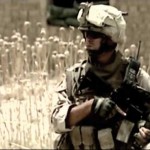The capabilities of the Israeli Air Force (IAF) are far more advanced today (in terms of enhanced accuracy and ability to penetrate hardened targets such as reactor containment) than they were in 1981 at the time of the Osirak raid.
This package would be divided into three smaller strike packages (one for each facility) Any larger strike package22 than this would strain Israeli refuelling capabilities. The paper has considered three routing options as under:-
- Northern Route Fly North to the Mediterranean sea, refuel ex airborne tankers, fly East over Turkey to strike Iran Total route length 2,220 kms approx.
- Osirak Route Fly South-east, skirt Jordan and Saudi Arabia, fly North-east over Iraq (with mid-air refuelling) and into Iran. This would largely be the Osirak route. Total length 2,160 kms.
- Southern Route Fly South-east, then East along Saudi”“Iraqi border to the Persian Gulf, refuel either over Saudi territory or the Gulf and on to Iran. At 2,410 kms, this is the longest routing option and would entail refuelling twice, both on the way out and in.23
Refuelling Capability
Israel has a fleet of 4 to 5 KC-130s and 5 to 7 KC-707s. For a strike package of 50 aircraft, the KC-707 fleet could deliver 12 to 16,000 lbs at a distance of 1,000 NM. All the three routing options would need refuelling twice, especially, if air”“to”“air combat takes place short of or over the target.24
Analysis: Raas and Lang Paper
The paper is silent about the aspect of reduction in range if the F-161s carry the 5,000 lbs BLU-113 warheads. Presumably, air”“to”“air refuelling on both the route in and route out of the flight path could overcome this constraint. However, the transit of such a huge strike package over the territories of Jordan, Saudi Arabia or Turkey is a major grey area that almost rules out these routing options. All that is left is the classical Osirak route over Iraq. The paper has also not gone into details of the suppression effort required to neutralise Iranian air defences, the electronic suppression measures and whether a Hawkeye Airborne Early Warning and Control (AEW or AWAC) would be needed to control the air-to-air battle that is bound to result as the strike packages penetrate Iranian airspace.
Employment of Special Forces
After the experience gained in trying to co-ordinate the three wings of the Israeli Special Forces (Sayeret Matkal of the Israeli Intelligence, Shaldag of the IAF and Sahyetet 13 Commandoes of the Israeli Navy) during the 2006 conflict in Lebanon, the Israelis have now set up the Special Forces Command or the “Deep Command”.25 This is now responsible for commanding and co-ordinating all operations beyond Territorial Command Theatres. It is headed by Brig Gen Tal Russo, a veteran Special Forces officer, and is now the Israeli Defence Forces Eighth HQ authorised to operate forces”“the other being Air HQ, Naval HQ, Northern, Central, Southern and Home Front Commands as also the AMAN”“or Israeli Intelligence.
The Deep Command was specifically established with potential conflicts in distant theatres like Iran in mind. This previously was solely the responsibility of the IAF. The Raas and Lang Paper feels that Israeli Special Forces employment will only be confined to vectoring in the air strikes with laser designators and carrying out immediate bomb damage assessment. In fact, the paper has identified the Sayeret-Shaldag Unit 5101 of the IAF, which specialises in laser designation, and Unit 5707, which specialises in real time bomb damage assessment, for this task.26 Post the war in Lebanon, the IAF primacy in matters military is being challenged by a new generation of Israeli Army Generals led by the new Chief of the General Staff Lt Gen Gabi Ashkenazi.





hello sir,
i have been following you since 2009, have gone through most of your books and that legendary IBTL 2013 speech. i am a graduate engineer, working as a Quality inspection , was an aspirant aiming for Indian Army but now concentrating more on civil services as after reading much more about internal security. i have also gone through the “Indian faultlines” by Capt. Bharat Verma, people like medha patkar, harsh mander, binayak sen, teesta seetalwaad, harsh dobhal, biju mathew including organisations like AID, Proxsa, FOIL, AIM, IAMC, umbrella group, ford foundation etc all are indulged in different kind of funding in india for communal,naxal disturbance etc, i wanted you take a look on these points and provide directions, as on the day i came to know about these process, i got so furious but was not able to do anything instead of my job and my mates are like join AAP and save country and these people somehow connected to AAP if i am correct, further sometime i use to see like another USSR breakdown type thing in India where we are also gonna be divided into pieces, as they are mostly insiders working on the basis of American organisation.
will be waiting for your reply sir.
warm regards
thank you